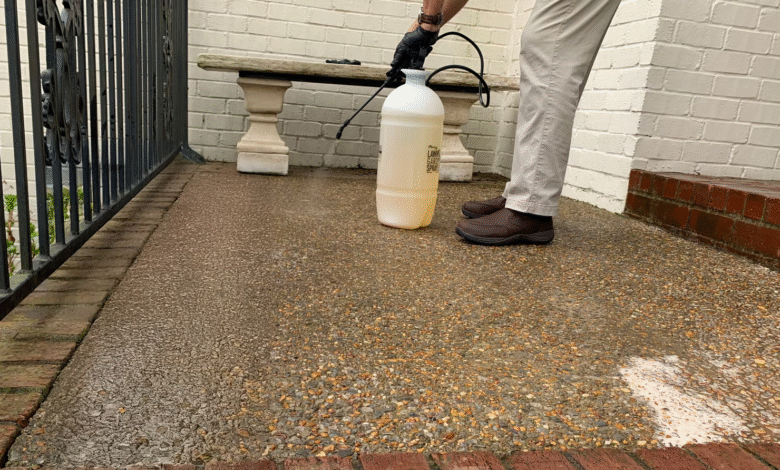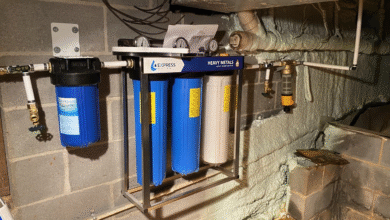How Routine Concrete Cleaning Protects Outdoor Spaces

Key Takeaways
- Regular concrete cleaning helps prevent deterioration and extends the surface’s longevity.
- Clean surfaces reduce slip hazards caused by the growth of algae and moss.
- Routine maintenance enhances the aesthetics and value of a property.
Introduction
Clean and well-maintained concrete surfaces are the foundation of attractive, functional outdoor spaces. Whether enhancing curb appeal for a residential patio or ensuring the safety and cleanliness of commercial walkways, consistent concrete maintenance plays a crucial role in preserving both beauty and structural integrity. Over time, outdoor concrete is subjected to a barrage of weather changes, foot traffic, and debris, all of which can accelerate surface wear and tear. Engaging in concrete cleaning services not only ensures a welcoming and attractive environment that’s enjoyable for everyone but also helps protect your property investment from gradual and often unseen damage that can accumulate over time.
The benefits of routine concrete care go far beyond visual appeal. By investing in regular cleaning, property owners significantly reduce safety hazards, such as slip-and-fall accidents, and prolong the useful lifespan of walkways, patios, and driveways. Let’s explore the many ways that routine maintenance protects outdoor spaces, safeguards your investment, and preserves the long-term value of your property.
Preserving Aesthetic Appeal
Outdoor concrete areas endure daily exposure to harsh elements, including rain, sun, vehicle fluids, and organic matter such as fallen leaves and growing moss. Over time, these surfaces can accumulate layers of dirt, algae, and stubborn stains that diminish their appearance and safety. That’s why many homeowners and property managers turn to pressure washing Indian Land SC as an effective solution for restoring the clean, vibrant look of their driveways, patios, and walkways. Over weeks and months, concrete begins to show unsightly dirt layers, greenish patches from algae, and dark stains from spilled drinks or car oil. Such blemishes not only tarnish a property’s curb appeal but also mask a concrete set’s intended texture, finish, and color. Even intricately designed stamped patios or decorative sidewalks may lose their beauty if neglected.
Consistent cleaning routines help restore the original appearance of concrete by removing discoloration, stains, and deposits before they become permanent. In high-traffic or visible areas—such as entryways, pool decks, or outdoor seating spaces—a fresh, clean look creates a welcoming atmosphere and conveys pride of ownership to guests and passersby. Routine care also prevents deep stains from setting in, making future cleaning more efficient and effective. According to the Portland Cement Association, this ongoing attention is crucial for maintaining the appearance and value of all types of concrete installations, whether residential or commercial.
Extending Surface Longevity
Concrete is durable but still vulnerable because it’s porous, meaning it can absorb moisture, dirt, oil, and organic growths. Without regular care, these substances may seep into the surface and accelerate deterioration by feeding mold, weakening the structure, and causing gradual erosion. During freeze-thaw cycles, trapped water expands, leading to cracks and eventual crumbling of the concrete, which can shorten the lifespan of the installation by years.
Scheduled cleaning stops this process early, removing contaminants before they penetrate deeper and cause lasting damage. With a routine maintenance plan in place, property owners can avoid many major headaches that accompany neglected concrete, including broken surfaces, disintegration, and costly rebuilding. The Portland Cement Association emphasizes that moisture management, including cleaning, is a crucial strategy for preserving the longevity and appearance of outdoor concrete.

Enhancing Safety
A key reason to keep concrete surfaces clean is to prevent people from slipping and falling. When grime, algae, mold, or wet leaves accumulate, they create slippery conditions that are especially hazardous in walkways, on stairs, and around swimming pools. Families with children, elderly residents, or anyone with mobility challenges face an even greater risk if these surfaces are neglected, as falls on hard concrete can cause serious injuries.
Regular pressure washing and the removal of organic buildup ensure that sidewalks, driveways, and patios remain safe to walk on throughout the year. Property owners, whether residential or commercial, must minimize accident risks—not just for personal safety, but to avoid potential legal liability in case injuries occur. The National Safety Council (NSC) emphasizes the importance of keeping outdoor surfaces clear of debris and slick substances to help prevent some of the most common—and preventable—accidents.
Preventing Structural Damage
Accumulated dirt, decomposing leaves, and moss can trap moisture on the surface and in small cracks, leading to prolonged periods of dampness. Prolonged moisture is a prime culprit behind both minor issues, such as staining, and more serious problems like spalling, where chunks flake off the concrete, undermining the stability and appearance of the slab. If not caught early, what starts as a small crack or spalled area can worsen over months, threatening the foundation and requiring extensive repairs.
By implementing a regular cleaning and inspection schedule, property owners can halt this destructive cycle, letting the concrete dry thoroughly between rains and use. This routine protects both new installations and aging concrete, reducing the odds of sudden, expensive failures. The Portland Cement Association emphasizes that moisture management, including cleaning, is a crucial strategy for preserving the longevity and appearance of outdoor concrete.
Cost-Effective Maintenance
Investing in routine cleaning is one of the most affordable ways to protect your property. The costs associated with professional cleaning—especially when compared to repairing sunken slabs, extensive cracking, or replacing entire patios and driveways—are minimal. Regularly removing damaging agents helps avoid the expense and hassle of complex restoration work in the future.
Tidy, well-kept concrete also boosts a property’s appraised value and marketability, whether you’re planning to sell or want to maintain your home’s best appearance. Businesses also benefit, as enhanced customer perceptions and reduced maintenance emergencies lead to improved outcomes.
Environmental Considerations
As concerns grow regarding our environmental impact, more property owners are turning to eco-conscious cleaning solutions for concrete. By using biodegradable detergents and employing targeted, low-water-pressure washing, the health of surrounding landscapes is preserved, and harmful runoff into local waterways is reduced. These options enable effective cleaning while maintaining environmental responsibility.
Choosing green products and best practices not only benefits your outdoor areas but also your neighbors and the local environment. To identify safe and sustainable cleaning options, homeowners can consult resources such as the EPA Safer Choice Program, which evaluates and endorses products that protect both human health and ecosystem quality.
Conclusion
Consistent cleaning of concrete surfaces is an investment in both appearance and resilience. Proper care not only keeps outdoor spaces bright and tidy but also prevents dangerous slip hazards and costly damage. By embracing affordable and responsible maintenance routines, property owners can extend the life of their patios, driveways, and walkways; protect property value; and help create safer—and greener—outdoor environments for years to come.




